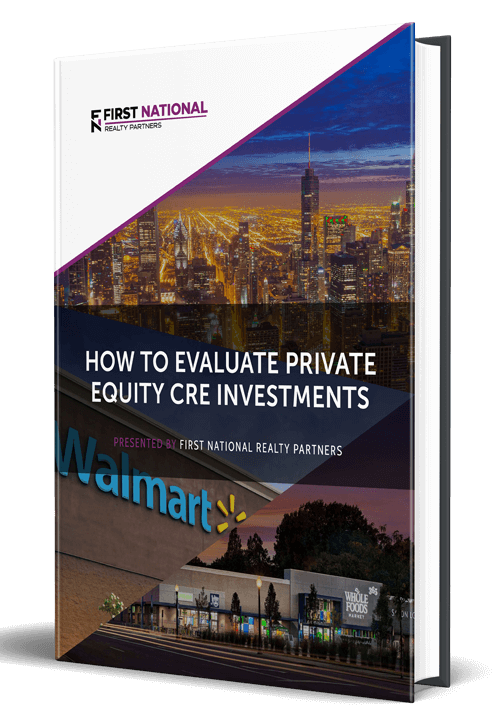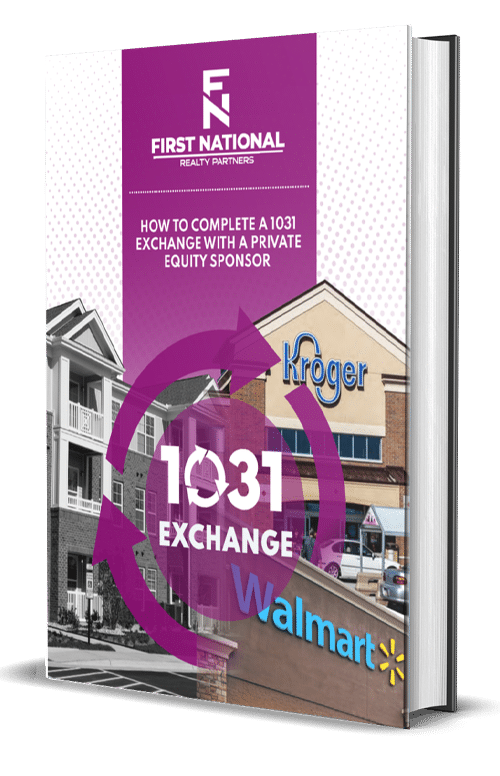2022 was a tumultuous year: a once in a century pandemic was grinding into its third year, supply chain and staffing shortages were affecting businesses everywhere, inflation was rising at the fastest rate since 1982, stocks notched their worst January since 2009, and interest rates were set to rise increasing the cost for all who borrow. In short, 2022 presented a significant amount of economic uncertainty, and investors were understandably concerned about preservation of capital.
In this article, we are going to describe 10 safe investments with high returns to which investors can allocate capital in 2023. We will identify what the investments are, why they are safe, and where to find them. By the end, investors will be able to use this information as part of their capital allocation decision making processes.
The 10 high-return investments for 2023 that we’ll cover include:
- Private Equity Commercial Real Estate
- High Yield Savings Accounts
- Certificates of Deposit
- Gold
- U.S. Treasury Bonds
- Series I Savings Bonds
- Municipal Bonds
- Corporate Bonds
- S&P 500 Index Fund
- Dividend Stocks
Of course, it is important to note that financial markets are inherently unpredictable, and past performance is no indication of future returns. With this post, we are not providing financial advice nor are we suggesting suitability for any individual investors. For these matters, it is always a best practice to seek professional advice from a CPA, financial advisor, and/or qualified attorney.
At First National Realty Partners, we specialize in the acquisition and management of grocery store anchored retail centers. From a safety standpoint, we believe that these assets offer a compelling choice through all phases of the economic life cycle. To learn more about our current investment opportunities, click here.
1. Private Equity Commercial Real Estate
Private equity commercial real estate firms invest in the privately held equity of other companies, including those that own real estate. With this investment, qualifying investors can purchase a fractional share of institutional quality assets and reap their pro rata share of the income and profits produced by them.
Why They Are Safe
In terms of safety, risk can vary by property type, but privately held commercial real estate assets are generally considered to be among the safest investments during periods of high inflation because rents and values rise in tandem. In addition, privately held property prices tend to be far more stable than their public counterparts because they trade less frequently and are subject to the whims of public markets.
Where to Find Them
There are dozens, if not hundreds, of private equity commercial real estate investment firms. Each tends to have their own specialty – ours is grocery anchored retail – so investors have an opportunity to partner with one whose strategy aligns with their own objectives. Private equity firms are most commonly found through internet searches, referrals, or primary research.
2. High Yield Savings Accounts
A High Yield Savings Account is a depository account held at a bank or brokerage institution. Funds are typically considered to be on demand, which means they can be deposited or withdrawn from the bank account at will. These accounts are different from a regular checking account because they pay interest, but the term “high yield” is relative as these accounts usually pay in the range of 1% – 2% interest annually.
Why They are Safe
Funds held at FDIC insured institutions are insured by the federal government up to certain balance levels. In addition, balances are very stable and interest is credited monthly. The only major risk of loss is theft, fraud, or the bank going out of business.
Where To Find Them
High yield savings accounts are usually available at any retail banking institution. But, the ones that pay the highest yield are often found in so-called online banks. So, it is likely worth an internet search to find the most competitive rates.
3. Certificates of Deposit
A Certificate of Deposit – CD for short – is a banking product that pays investors interest as long as they deposit a lump sum and agree to not touch it for a certain period of time. Some CDs are short term (<12 months) and others have a longer term. As a general rule, CDs with a shorter term pay less interest than those with a longer term.
Why They Are Safe
A CD is considered to be a deposit account, which means that they are also FDIC insured up to a certain amount. As such, there is a low probability for loss of principal. CDs do not have the same volatile price movements as stocks or ETFs, but they also pay a relatively low rate of interest…because they are so safe.
Where To Find Them
Like savings accounts, CDs can be found at local retail banks as well as through an internet search. Again, the internet variety is likely to pay a higher rate than the local bank.
4. Gold
Gold is a rare, precious metal. Until 1971, it backed the US Dollar and has remained prized as a hedge against inflation. Most individual investors will not buy the same gold bars that backed the dollar. Instead, it is much more likely that they may own gold coins, stock in gold miners, or gold funds.
Why It Is Safe
Gold is valuable because of its scarcity. In addition, it has long been considered to be one of the best investments in an inflationary environment because its value rises in tandem with inflation. While this is true, investors should consider that physical gold can also be illiquid and the transaction costs of exchanging it for dollars can be high. For example, if an individual has a 1 ounce gold coin and gold is trading at $1,800 per ounce, it is unlikely that they will get that price if they sold it to a middleman.
Where To Find It
As described above, gold can be purchased in many forms. Investors looking for gold exposure can buy the publicly traded shares of gold miners or gold custodians through their brokerage account. Or, they can buy physical gold from dealers or the US Mint, who sells gold coins.
5. US Treasury Bonds
A US Treasury Bond is a debt instrument issued by the United States government. When an investor buys one, they are essentially making a loan to the US government and receive repayment in monthly “coupons” and principal at maturity. Treasury Bonds are issued in a variety of maturities, including 5, 10, 15, and 30 years. As a general rule, the longer the maturity, the higher the potential interest rate.
Why It Is Safe
Of the choices in this article, this is likely the safest investment because US Treasury Bonds are backed by the full faith and credit of the US government. Because the government has the ability to raise taxes and/or create more currency for repayment it is a very safe bet that investors will receive their full interest and principal payments for each bond purchased.
Where To Find Them
Individual bonds can be purchased through financial advisors and with brokerage accounts. Or, investors looking for more diversification can purchase bond index funds, bond exchange traded funds, or bond mutual funds through their preferred brokerage firm.
6. Series I Savings Bonds
An “I-Bond” is a debt instrument that pays a fixed rate of interest plus a semi-annual adjustment for inflation. At the time of writing, I-Bonds pay 7.12% interest (based on high inflation readings). Investors should be aware that there is a cap on how much can be invested in I-Bonds, $10,000 in electronic form and $5,000 in paper form. Electronic I-Bonds can be purchased in any denomination – up to the cap – and paper bonds can be purchased in $50, $100, $200, $500, and $1,000 denominations.
Why They Are Safe
I-Bonds are issued by the US Treasury, which means they can be a very safe addition to an investment portfolio or retirement account. This is especially so because the interest rate is reset every six months based on inflation. So, in an inflationary environment, the rate on I-Bonds rises in tandem with inflation, which lowers the risk of investors losing purchasing power.
Where To Find Them
Individual I-Bonds can be purchased in two ways. They can be purchased electronically, through the TreasuryDirect program. Or, they can be purchased in paper form using a federal income tax refund.
7. Municipal Bonds
Whereas Treasury Bonds and I-Bonds are issued by the federal government, municipal bonds are debt instruments issued by state and local governments – usually to fund major projects like roads, bridges, or water treatment plants. Investors who buy them are repaid with interest monthly and principal at maturity.
Why They Are Safe
Those with a low risk tolerance like municipal government bonds because they are backed by the credit of the issuing government who has the ability to raise taxes to repay bond holders. For example, suppose a government needs to raise $1B for the construction of a major new road. They can issue bonds to individual investors and then raise taxes to repay them. In addition, the interest paid on municipal bonds is tax free in some cases, which can contribute to overall profitability.
Where To Buy Them
Municipal bonds can be purchased through individual brokerage accounts or through municipal bond funds. But, they often require the advice of a financial advisor because there are so many investments that individuals may benefit from some assistance identifying which governments offer the best combination of lowest credit risk/highest interest rate.
8. Corporate Bonds
As the name suggests, corporate bonds are debt instruments issued by corporations. Again, the funds are usually used to finance a major new project or investment – like a factory.
Why They Are Safe
Corporate bonds are backed by the credit of the issuing corporation. So, investors must be very careful to study the creditworthiness of the corporation to ensure they have the resources to repay the debt as issued. For this reason, corporate bonds are considered to have slightly higher risk than treasury or municipal bonds, but they also offer a higher return to compensate.
Where To Buy Them
Corporate bonds can be purchased through individual brokerage accounts. Again, it may be in an individual investor’s best interest to seek counsel from a financial advisor or third party rating agency because the credit risk can vary for each company. For example, Apple has the highest bond rating possible based on their incredibly profitable core business, their long track record of profitable operations, and strong free cash flow. So, their bonds would have much lower risk than an unknown or unprofitable company.
9. S&P 500 Index Fund
The S&P 500 Index is an index that tracks the performance of 500 large companies. Thus, an S&P 500 Index Fund is an investment vehicle that is designed to track the performance of the index. These index funds can be “market weighted” which means that shares of each company are purchased in proportion to their representation in the index. Or, they could be equal weighted which means that shares are purchased so each company makes up .20% of the overall index (1/500th). For example, Amazon makes up ~3.9% of the S&P 500 index by market cap. So, in a market weight fund, 3.9% of the total portfolio would be earmarked for Amazon shares. In an equal weight fund, just .20% would be allocated to Amazon shares.
Why It Is Safe
On a relative basis, an S&P 500 Index Fund is one of the riskier investments on this list because stocks are exposed to the volatility associated with price movements in the stock market. But, they are safe because this is a low cost way to gain access to a fully diversified portfolio of equities. An S&P 500 Index fund can be a great way for beginners to get started with equity investing.
Where To Buy Them
S&P 500 Index funds are offered by just about all major investment management firms like Fidelity, Charles Schwab, or Vanguard.
10. Dividend Stocks
Dividend stocks are individual stocks, usually of mature companies, that offer periodic distributions of cash to their shareholders. For example, Ford Motor Corp pays a dividend of 40 cents per share, per year. So, an investor who owns 100 shares could expect to see $40 per year in income on top of whatever the market returns.
Why They Are Safe
In terms of buying individual stocks, a dividend stock investment strategy is considered to be safer because investors are able to earn some return on their money while they wait for the share price to rise over the long term. Also, companies that can afford a dividend payout are usually large cap, mature companies that have recognizable names and reasonable valuations. Think Apple, Nike, Ford, Microsoft, Wells Fargo, etc. These are not companies that are in danger of going out of business any time soon.
Where To Buy Them
Individual, dividend paying stocks can be purchased through brokerage accounts. Again, there are hundreds of companies that pay dividends of varying amounts. They all have different levels of risk so it is a good idea to work with a financial advisor or other expert to find one or more stocks that are a good fit for your long term investment strategy.
Final Thoughts
It is important to remember that all investments have risk. And, there is a relationship between risk and return. Investments with more risk have the potential for higher returns. Investments with low risk, tend to have lower returns. Even though all the investments on this list are considered to be relatively safe investments with high returns, they are not risk free.
Each investor has to decide for themselves what level of risk that they are comfortable with and then find one or more investments that are a good fit for their risk tolerance, time horizon, and financial goals. But, in turbulent and uncertain markets, the above investments can be a safe haven when compared with high risk options like growth stocks or cryptocurrencies (Bitcoin, Ethereum, etc).
Interested In Learning More?
First National Realty Partners is one of the country’s leading private equity commercial real estate investment firms. With an intentional focus on finding world-class, multi-tenanted assets well below intrinsic value, we seek to create superior long-term, risk-adjusted returns for our investors while creating strong economic assets for the communities we invest in.
If you are an Accredited Real Estate Investor and would like to learn more about our investment opportunities, contact us at (800) 605-4966 or info@fnrpusa.com for more information.






